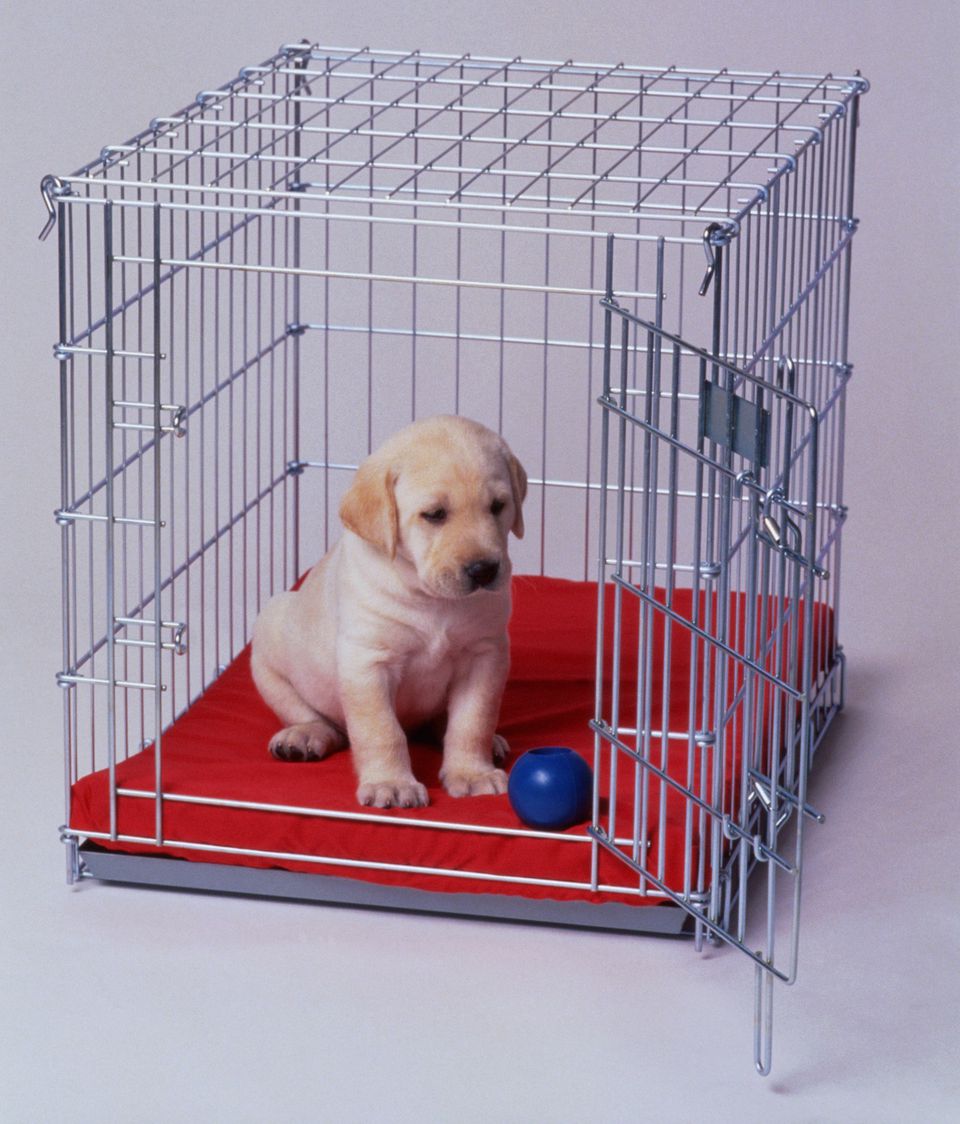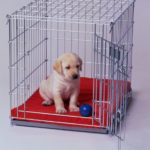
House training and feeding schedules go hand in hand. A crate or kennel is an integral part of the program.
Your new pup should be put in a crate at night, without food or water. The first person up in the household in the morning should pick up the puppy from within the crate and carry it out to the yard. Use the same path, through the same door, to the same spot in the yard each time. Set the puppy down in the grass and stand silently until he or she voids. Bend down and praise the puppy immediately afterward, using the same jolly routine each time. Take the dog back into the house and put water down for the day and the first meal. Feed the puppy a dry, canine growth diet for a maximum of 20 minutes. At the end of this time, remove the food bowl and shortly return pup to the selected spot in the yard. Puppies usually void after eating, so we can use this to our advantage. Pups from 6 to 12 weeks of age should be fed 3 twenty minute meals a day. After 12 weeks of age, only 2 twenty minute meals a day are needed. Return the pup to the same area of the yard after each meal, about every 2 to 3 hours between meals and the last thing at night, before crating. Remove water at 7:00 p.m. every night.
At bedtime, put the puppy in the crate, away from the bedroom and retire for the evening. Continue rigid meal and water schedules until the pup has no more accidents in the house for 90 days. At that time, you may leave water down all the time.
Continue crate use at night and/or when you are away from the house, until you have absolute confidence in the pup staying alone. Think of the crate as a child’s room. Puppies are normally den animals and do not object to the use of a crate. Crate training as a pup will facilitate traveling in a kennel in the car and/or being confined in a kennel when visiting someone else’s home. Crating should be restarted immediately if your dog becomes destructive to furniture or objects, or starts urinating or stooling in the house while you are away from home.
Leash training is simple and easy, if started early and done correctly. Training should be started the second week you have your new puppy. On the way from the crate to the outdoors, slip a leash and choke chain over the puppy’s neck. Carry the pup to the yard to the usual spot and set in the grass. The first week, the leash is just attached, not actually being used to lead the pup. The second week, start leading the puppy back to the door after voiding in the yard. The third week, start leading the dog around the yard and block. It is important to accomplish the above as soon as possible. Walking your dog around the block is a repetitive obedience drill; you are socializing your puppy with the world and all that’s in it, in a safe, controlled manner. Walk your dog on your left side, so if you start a formal obedience class later, you will be starting correctly.
Proper dog etiquette and manners are taught also by behavior modification. Reward quiet, closed mouth behavior. Teach quiet games for inside and play more energetic games outside.

